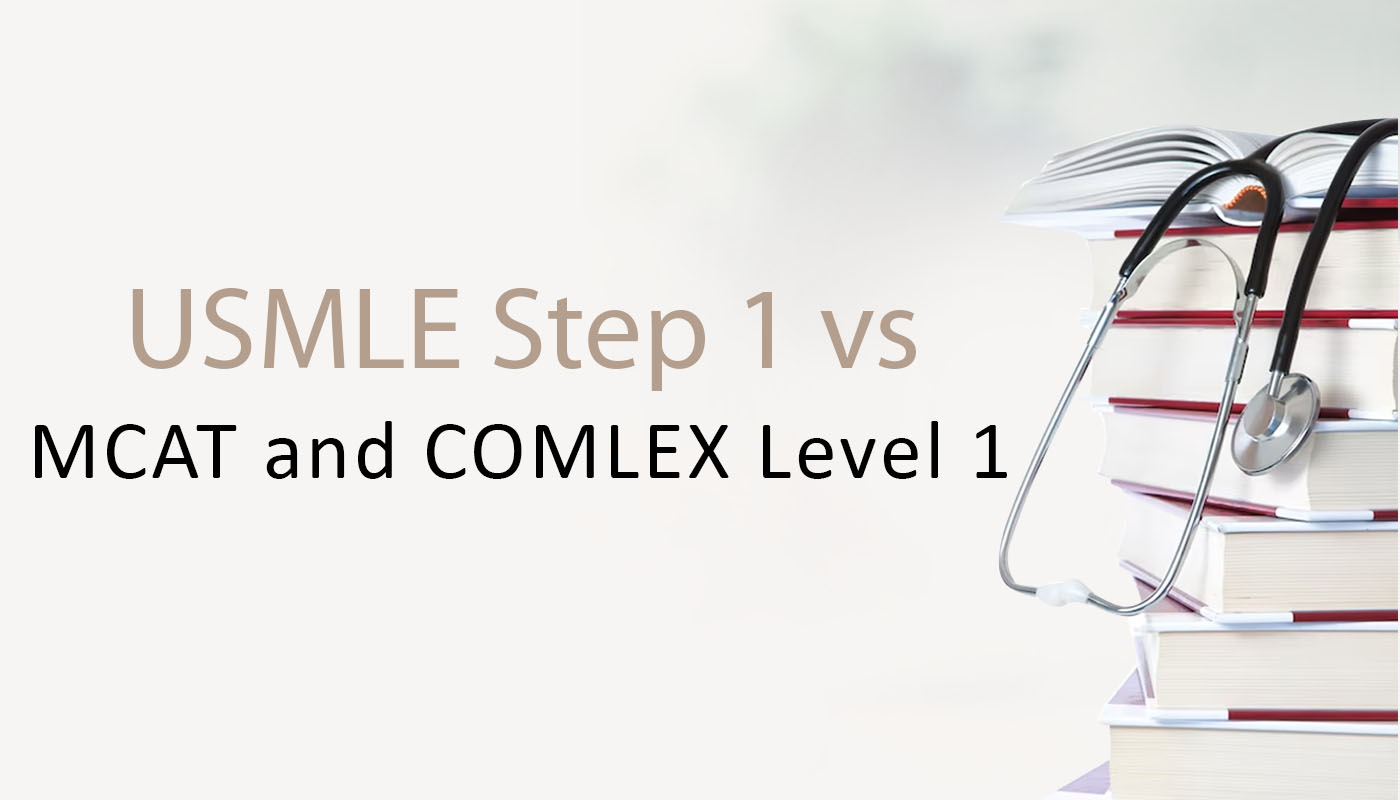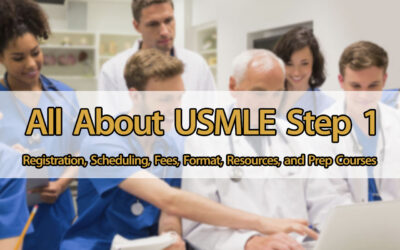Paving the way through the rigorous path of medical education in the United States brings aspiring medical professionals face-to-face with several key examinations, each playing a pivotal role in shaping their future in the healthcare sector. Among these, the United States Medical Licensing Examination (USMLE) Step 1 stands as a fundamental milestone, rigorously testing candidates’ grasp of basic medical sciences and their application in clinical scenarios. This comprehensive guide delves into the intricate details of the USMLE Step 1, exploring its length, structure, and content, and contrasts it with the Medical College Admission Test (MCAT) and the Comprehensive Osteopathic Medical Licensing Examination (COMLEX) Level 1.
These critical examinations mark the journey towards becoming a licensed medical professional. While the USMLE Step 1 is an in-depth test of medical knowledge crucial for licensure in the U.S., the MCAT serves as a gateway for pre-medical students, focusing on fundamental scientific concepts and critical thinking skills necessary for medical school. On the other hand, the COMLEX Level 1, tailored for osteopathic medicine, emphasizes the medical sciences and the unique principles of osteopathy. This guide aims to provide an insightful comparison of these exams, highlighting their distinctive objectives, formats, and the strategic approaches required for successful navigation through each. For those on the path to a medical career, understanding the nuances of these exams is not just about passing tests; it’s about laying a strong foundation for a lifetime of medical practice and patient care.
Summary
The USMLE Step 1, an integral part of the medical licensing process in the U.S., stands out with its 8-hour duration and 280-question format, structured into seven one-hour blocks. The test’s emphasis on basic science concepts and their clinical applications contrasts significantly with the MCAT and COMLEX Level 1. While the MCAT, a 7.5-hour exam, evaluates foundational scientific knowledge and reasoning skills pertinent to medical school readiness, the COMLEX Level 1, with its 352-question format over two sessions, incorporates osteopathic principles, emphasizing rote memorization and application. This guide delves into the unique attributes of these exams, highlighting the importance of meticulous preparation, comprehension of content scope, and time management strategies vital for aspiring medical professionals.
The Importance of Step 1 for Residency in the Pass/Fail Era
Despite the transition to a pass/fail scoring system, the USMLE Step 1 remains a significant hurdle for medical students seeking to match into their desired specialty.
In addition, passing Step 1 is crucial to avoid automatic rejections from residency programs, many dismissing any applicant with a USMLE fail. Doing well on Step 1 is vital for making a positive impression with your application.
Moreover, a solid performance on Step 1 underpins success in clerkships, shelf exams, and the USMLE Step 2 CK. With Step 1 now being pass/fail, these other elements of your medical education and performance gain greater significance in residency selection.
How Long is Step 1?
The USMLE Step 1 is an 8-hour examination featuring 280 multiple-choice questions.
These questions are split into seven blocks, each lasting an hour and containing 40 questions.
The test allows for 60 minutes of break time, 45 minutes of which can be used between question blocks. An additional 15 minutes is available if you skip the orientation at the start of the exam.
Step 1 is an 8-hour examination, including 60 minutes of break time.
Number of Questions and their Coverage
USMLE Step 1 features 280 multiple-choice questions divided into seven blocks of 40 questions each. These questions assess your medical knowledge of basic science and clinical topics, covering core concepts and principles from anatomy, physiology, biochemistry, pharmacology, pathology, microbiology, and more.
Time Allotment per Step 1 Question
Time management is crucial when preparing for the USMLE Step 1. You have roughly 90 seconds to answer each question. As such, it’s critical to read each question carefully and efficiently. Striking a balance between speed and accuracy is key to successful time management on this examination.
Step 1 vs. MCAT: A Comparison of Length and Content
Two significant exams in a budding medical professional’s journey are the USMLE Step 1 and the Medical College Admission Test (MCAT). While both are important, they differ significantly in content and structure.
The MCAT, a 7.5-hour exam, serves as a critical benchmark for pre-medical students and comprises 230 questions. It covers fundamental scientific knowledge in physics, chemistry, biology, psychology, sociology, and critical analysis and reasoning skills. The MCAT aims to assess a student’s understanding of basic scientific principles and their potential to succeed in medical school.
On the other hand, the USMLE Step 1 is an 8-hour exam with 280 questions. Unlike the MCAT, the USMLE Step 1 delves deeper into medical topics. It evaluates a student’s ability to apply scientific concepts and principles related to medicine and focuses heavily on disease diagnosis and the fundamental principles of medicine. This test goes beyond the foundational sciences tested on the MCAT to include topics such as anatomy, physiology, biochemistry, pharmacology, pathology, and microbiology.
Both exams require extensive preparation and a thorough understanding of the material. However, they differ in their objectives: while the MCAT aims to determine if a student is ready for medical school, the USMLE Step 1 focuses on whether a student possesses the knowledge and skills necessary to practice medicine effectively.
Step 1 vs. COMLEX Level 1: Length and Content
The USMLE Step 1 and the Comprehensive Osteopathic Medical Licensing Examination (COMLEX) Level 1 are two separate examinations that medical students may encounter. While they share similarities in length, their content and focus differ significantly.
The USMLE Step 1, as we’ve discussed, is an 8-hour exam with 280 questions divided into seven blocks of 40 questions each. In contrast, COMLEX Level 1 is also an 8-hour exam but includes a staggering 352 questions split between two 4-hour sessions. As a result, students have approximately 90 seconds per question for the USMLE Step 1 and a slightly shorter 82 seconds per question for the COMLEX Level 1.
While both exams assess a student’s understanding of medical science and its clinical applications, COMLEX Level 1 also integrates principles of osteopathic medicine. Topics unique to this exam include osteopathic manipulative medicine, neuromusculoskeletal medicine, and osteopathic principles. Additionally, COMLEX Level 1 emphasizes rote memorization more than USMLE Step 1, which prioritizes the mastery and application of medical concepts.
Study Strategies for the USMLE Step 1
Effective study strategies and resources can be crucial given the USMLE Step 1 in a medical student’s career. Here are some strategies and resources that have proven successful for many students:
- Start Early and Create a Study Plan: The sheer volume of information covered by the USMLE Step 1 requires that students start studying months in advance. A well-structured study plan will help manage the vast amount of material that needs to be mastered. Your plan should include which topics you will study and when and how much time you will spend reviewing previous material.
- Use High-Yield Resources: Utilize resources designed specifically for USMLE Step 1 preparation.
- Active Learning: Actively engage with the material as much as possible. This could include drawing out processes, teaching the material to someone else, or using flashcards to test your recall. One popular flashcard platform used by medical students is Anki.
- Practice Questions: Doing practice questions is one of the most effective ways to prepare for the USMLE Step 1. Not only do they help you apply what you’ve learned, but they also familiarize you with the exam format.
- Review Regularly: Regular review is key to ensuring that the information stays fresh in your memory. This could be through flashcards, quick reviews of your notes, or simply discussing topics with peers.
- Take Care of Your Health: Regular exercise, a balanced diet, and adequate sleep can significantly impact your study effectiveness and exam performance. Therefore, it’s essential to maintain a healthy lifestyle throughout your study period.
- Practice Exams: Full-length practice exams can help you gauge your readiness for the real test and identify areas of weakness. The NBME (National Board of Medical Examiners) provides practice exams that closely mimic the actual USMLE Step 1 in content and format.
Remember that everyone has different learning styles, so what works best for one person might not work best for another. Understanding your learning style and tailoring your study strategies is important. Stay focused, stay positive, and remember that every step you take brings you closer to your goal of becoming a physician.
Concluding Thoughts
Kicking off on a medical career requires navigating various critical examinations, each serving a distinct purpose in shaping a future physician’s journey. The USMLE Step 1, with its comprehensive assessment over eight hours, remains a cornerstone in evaluating a candidate’s medical knowledge and application skills. Despite its transition to a pass/fail system, its role in residency placement and future medical proficiency remains undiminished. In contrast, the MCAT and COMLEX Level 1, while differing in content focus and question format, are equally pivotal in a medical student’s career trajectory. Mastery of each exam’s unique requirements, coupled with tailored study strategies and a commitment to maintaining balance and wellness, not only aids in successful exam performance but also lays the foundation for a fulfilling medical career. As medical students navigate these challenges, the convergence of knowledge, skill, and dedication emerges as the key to unlocking their potential as competent and compassionate healthcare providers.
It’s essential to remember that while the USMLE Step 1 is a significant milestone, it’s just one step on the journey to becoming a proficient and compassionate medical professional. Diligent preparation, effective time management, and a deep understanding of the subject matter will serve you well, not just in passing this exam but in your future medical career.




